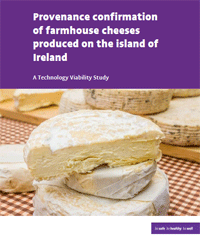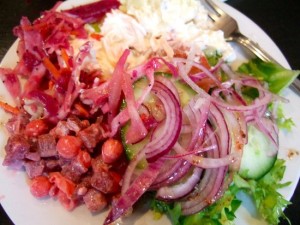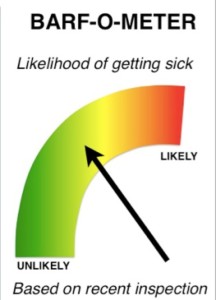I never saw my uncle Larry barf, but when I was young, he seemed larger than life. Great hockey player. As he died, not so much.
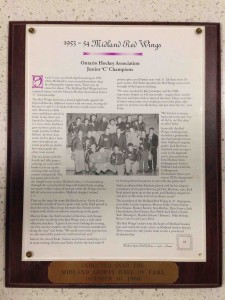 George Winter of The Irish Times writes in the gazetteer of human illness, and forever associated with the most common cause of acute infectious gastroenteritis in western Europe and North America, is Norwalk in the US state of Ohio.
George Winter of The Irish Times writes in the gazetteer of human illness, and forever associated with the most common cause of acute infectious gastroenteritis in western Europe and North America, is Norwalk in the US state of Ohio.
In October 1968, 116 pupils and teachers at the town’s Bronson elementary school contracted diarrhoea and vomiting.
By 1972, electron microscopy of feces samples taken from the outbreak identified a novel agent, subsequently named Norwalk virus.
Known today as norovirus, its alias, the “winter vomiting bug”, is a misnomer, with year-round outbreaks occurring, albeit with a winter peak.
For example, data from the HSE’s health protection surveillance centre show that in April, May and June of 2015 there were 25 outbreaks involving 385 people, and by mid-November 2015 a total of 87 outbreaks had affected 1,508 people. Norovirus gastroenteritis has been a notifiable disease in Ireland since January 2004.
Infection control expert Prof Dinah Gould of Cardiff University highlights the mistaken belief that norovirus gastroenteritis is “always without serious consequences and the infection is frequently described as mild and self-limiting”.
This, she writes, ignores the fact that the illness is distressing and can last for several days. Further, while healthy individuals do not suffer long-term ill effects, there may be severe outcomes for children, the elderly or those with compromised immune systems.
According to Gould: “They can become severely dehydrated, and in severe cases may develop renal impairment.”
Viral gastrointestinal infections are acquired via the fecal-oral route: viruses shed in feces end up in someone else’s mouth, typically through food or water, although virus transfer can occur from touching contaminated surfaces.
Noroviruses are as tough as old boots and expert inducers of projectile vomiting, so can cause havoc on cruise ships and in institutional and other settings. On December 5th last year, for example, the staff canteen at Russell Investments Center’s skyscraper offices in Seattle, Washington State, was reportedly the suspected source of a norovirus outbreak affecting hundreds of employees.
In 2009 celebrity chef Heston Blumenthal was running the Fat Duck restaurant in Berkshire, and over a six-week period, 529 diners were also running within 48 hours of sampling a tainted tasting menu costing £130.
Heston’s declared speciality of “molecular gastronomy” was apposite given laboratory findings that samples of the Fat Duck’s nosh featured a striking molecular profile consistent with norovirus enrichment.
Contaminated oysters were suspected, and a 47-page UK Health Protection Agency report on the outbreak reprints the tasting menu, including an oyster and passion fruit jelly with lavender, and something called “Sound of the Sea”.
And 2014 saw inspectors telling staff at Blumenthal’s Dinner restaurant in London’s Knightsbridge to wash their hands more often following a norovirus outbreak affecting 10 dinner diners.
The importance of handwashing for the interruption of norovirus transmission is crucial considering that during an acute infection more than one billion virus particles per gram of faeces can be shed, and that healthy adults usually excrete norovirus for about 10 days, although one report found that a child shed norovirus for about 100 days.
Someone delving into the cloacal chaos wrought by norovirus is Dr Catherine Makison Booth, senior scientist at the UK government’s Health and Safety Laboratory.
Makison Booth’s invention – Vomiting Larry – gives startling insights into the infectious nature of this agent. But who is Larry?
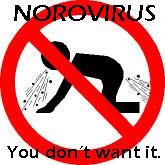 The title of Makison Booth’s paper in the Journal of Infection Prevention (2014, 15: 176-180) sums it up: “Vomiting Larry: a simulated vomiting system for assessing environmental contamination from projectile vomiting related to norovirus infection.”
The title of Makison Booth’s paper in the Journal of Infection Prevention (2014, 15: 176-180) sums it up: “Vomiting Larry: a simulated vomiting system for assessing environmental contamination from projectile vomiting related to norovirus infection.”
A system of compressed air, pistons, a water supply and a “pneumatic ram”, Larry is topped off by an authentic manikin head, complete with teeth, tongue and vocal cords.
“The first question anyone asks about Vomiting Larry is why is he called Larry and not Vomiting Victor, Puking Pete or Barfing Barry,” Makison Booth told The Irish Times.
“His name comes from his realistic manikin head, which is a commercially available device in its own right known as Airway Larry, used by medical students for practising techniques such as laryngoscopy.
“There can be as many as a thousand million viruses in the vomit and diarrhea produced by infected individuals, yet it takes only 10 to 100 viruses to cause infection in the next unaffected person.
“Currently there is no vaccine; no antiviral treatment; and most people often have limited immunity even after being infected.”
Norovirus is resistant to many cleaning products and alcohol hand gels we use today, meaning “norovirus spreads like wild- fire during outbreaks, causing the closure of hospitals, schools, cruise ships and even offshore rigs to try to curb its spread”.
 When it opened last October, the owners said Son of a Bun was “the only restaurant approved by the HSE to serve burgers cooked pink”.
When it opened last October, the owners said Son of a Bun was “the only restaurant approved by the HSE to serve burgers cooked pink”.

